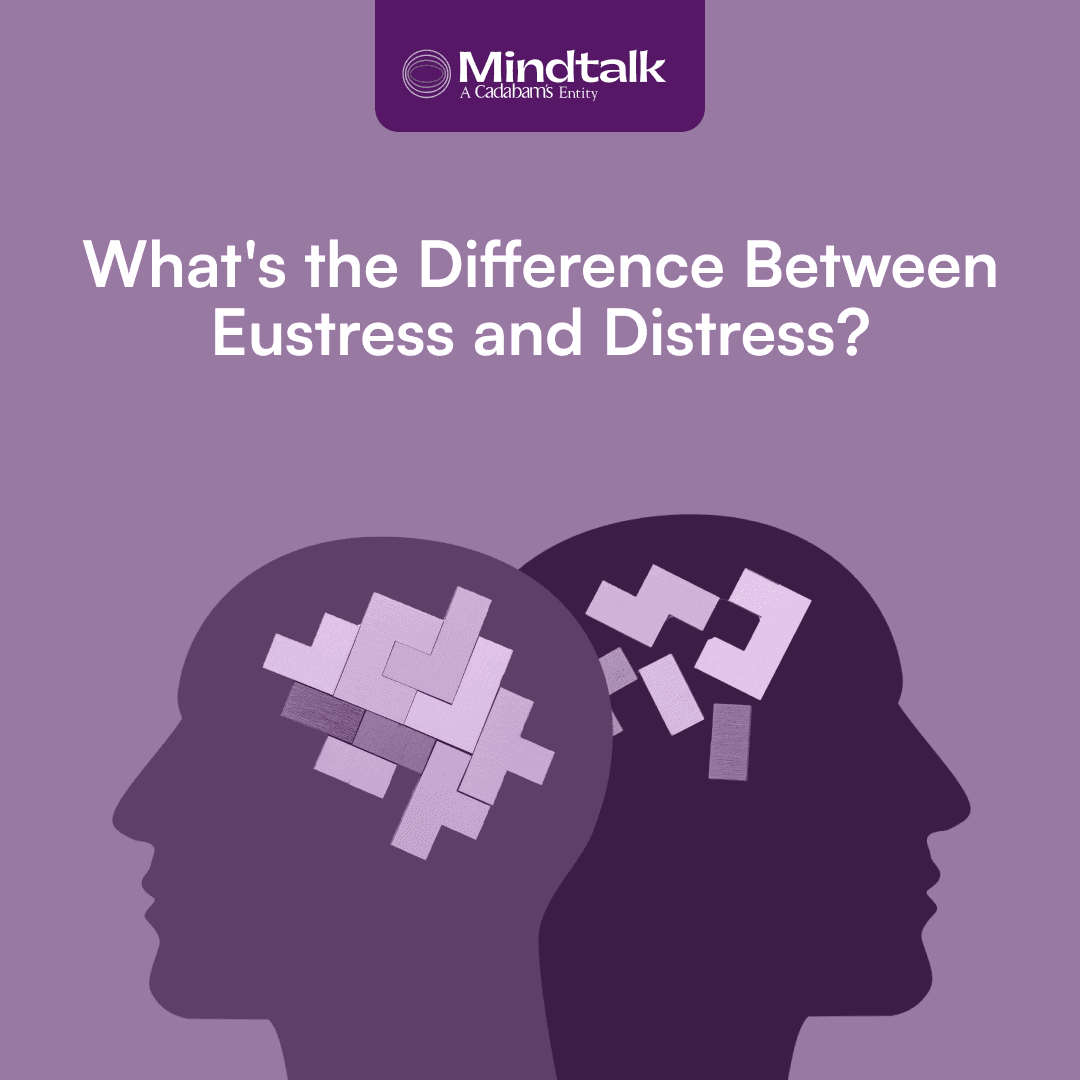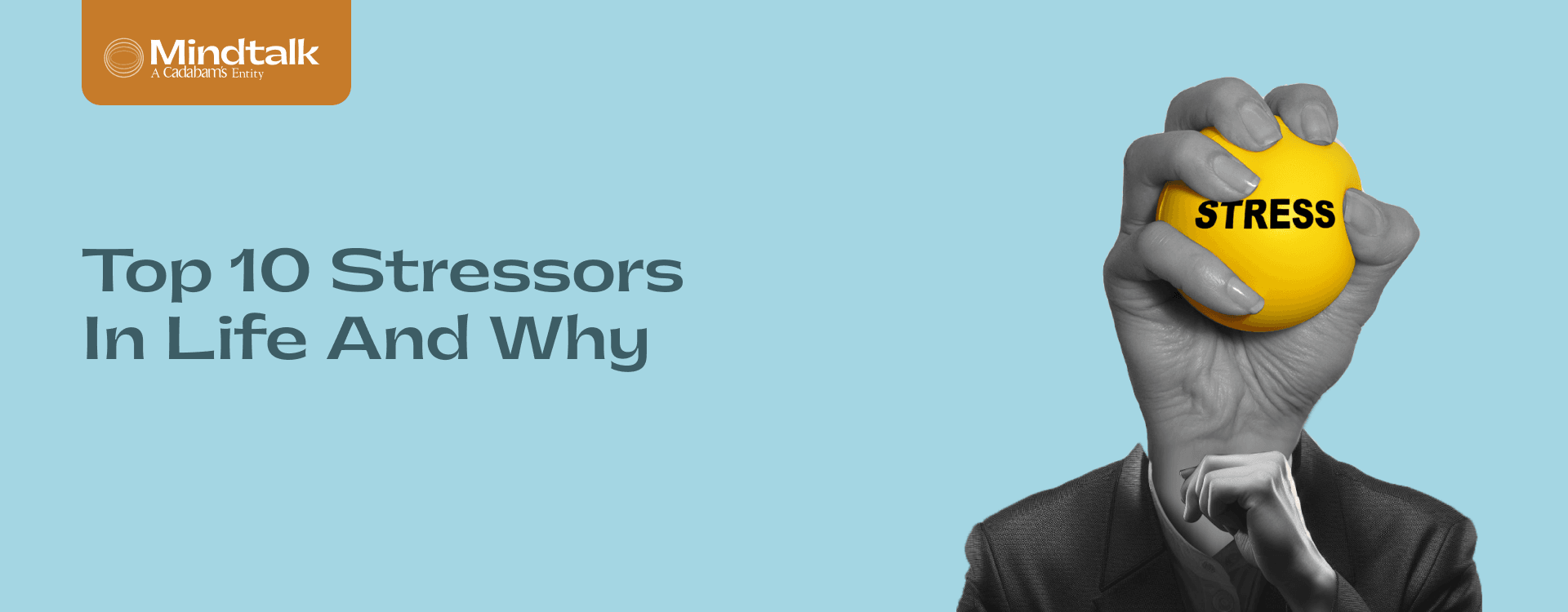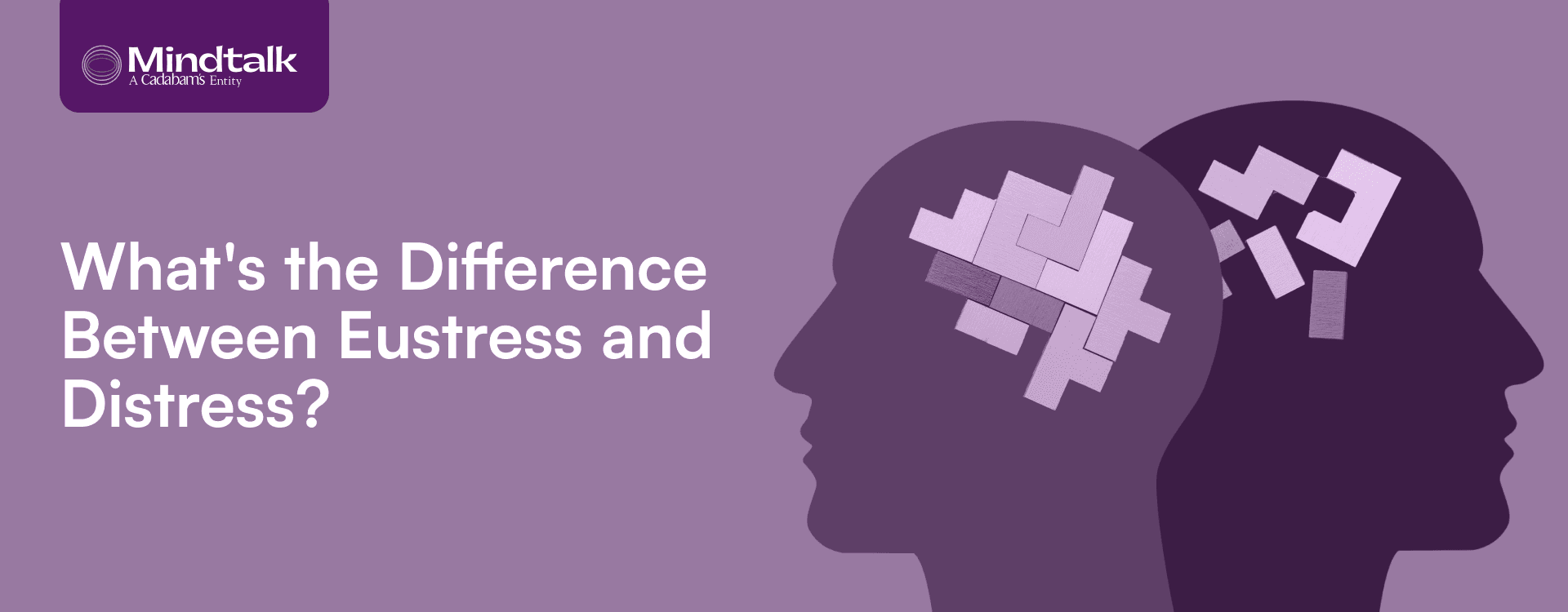Eustress vs. Distress: Understanding Stress In Our Lives

The word stress has a bad connotation stuck to it, but did you know that it also has a good side to it? Let’s look at what is the difference between Eustress and Distress and how to manage both sides of stress.
What Distinguishes Distress From Eustress?
Distress and eustress are different sides of the stress coin. What distinguishes distress from eustress, and how can recognizing this difference contribute to effective stress management? Understanding this distinction is key to harnessing the benefits of eustress while mitigating the harms of distress.
Exploring Distress: Characteristics And Effects
Distress is a gnawing feeling of unease that lingers on. Let’s delve into its characteristics, impact on your well-being, and common triggers.
What Is Distress? Understanding Its Nature
Distress, unlike fleeting stress, is a more prolonged and intense response to a perceived threat or challenge. It manifests as an array of emotional, cognitive, and physical symptoms, ranging from anxiety and sadness to fatigue and muscle tension. While normal in varying degrees, chronic distress can significantly impact your well-being.
The Impact Of Distress On Mental And Physical Health
Beyond the emotional toll of worry and sadness, distress can wreak havoc on your physical health. It disrupts sleep, weakens immunity, and exacerbates existing conditions like asthma or high blood pressure. Chronic distress can also increase the risk of mental health issues like depression, anxiety, and substance abuse.
Common Causes And Examples Of Distress
Life throws diverse curveballs, each triggering distress: work deadlines, financial strain, relationship conflicts, chronic illness, or significant life changes. Even seemingly positive events like weddings or promotions can bring the pressure of change and expectations. Recognising your unique triggers and seeking support are crucial steps to managing distress.
Exploring Eustress: The Positive Aspect Of Stress
Although it might sound like a lie, not all stress is bad! Let us introduce you to the term eustress; the "good" stress that can motivate, energise, and even propel you towards growth.
What Is Eustress?
Think of eustress as a healthy challenge, a spark that ignites motivation and growth. It's the stress that comes with learning a new skill, pursuing a goal, or tackling a stimulating project. Unlike distress, it feels manageable and exciting, fueling focus and positive energy.
Examples Of Eustress?
Have you ever felt the thrill of public speaking, the rush of learning a new dance move, or the satisfaction of tackling a challenging fitness goal? Those are all examples of stress! Stepping outside your comfort zone, pursuing a passion project, or competing in a healthy way can all trigger positive stress.
What Makes The Eustress Good Stress?
Eustress is "good" because it pushes you beyond your limits, encourages learning and growth, and boosts feelings of accomplishment. It activates your "fight-or-flight" response in a controlled way, enhancing focus, clarity, and motivation. When managed effectively, eustress can fuel creativity, improve performance, and lead a more fulfilling life.
What Is the Difference Between Eustress And Distress?
Now that we’ve understood that there are two different types of stress, let's look at the key differences between eustress (good stress) and distress (bad stress) to navigate them effectively and unlock the power of positive challenges.
Eustress vs Distress. Psychological And Physical Differences
Eustress: Feels manageable, exciting, and motivating. Boosts energy, focus, and feelings of accomplishment. Physically, it raises heart rate and cortisol but in a controlled way.
Distress: Feels overwhelming, anxiety-inducing, and draining. Triggers negative emotions and impairs focus. Physically, it leads to chronic muscle tension, fatigue, and weakened immunity.
Recognising the difference between Eustress vs. Distress is key to managing stress effectively. Eustress motivates and energizes, while distress overwhelms and harms. Understanding this distinction helps you harness the positive effects of eustress and mitigate the negative impact of distress.
What Is The Difference Between Eustress And Destress ?
Listen to your body and mind! Does the challenge energise or deplete you? Does it fuel motivation or paralyse you with worry? Eustress feels temporary and manageable, while distress feels persistent and overwhelming. Recognise your triggers and adjust your approach to reap the benefits of eustress and minimise the impact of distress. Understanding what is the difference between Eustress and Distress can guide you in identifying these triggers.
Managing Both Types Of Stress: Strategies And Tips
Managing Eustress vs. Distress—both types of stress—is important, so let’s explore the most effective strategies and tips to manage both, which should eventually help you harness the good and minimize the bad (stress, that is).
Understanding And Identification
Learn to recognise the signs of eustress (motivation, focus) and distress (anxiety, exhaustion). Reflect on situations that trigger each and how your body and mind respond. This self-awareness empowers you to choose appropriate coping mechanisms.
Healthy Lifestyle Choices
Fuel your well-being! Prioritise sleep, healthy eating, and regular exercise. These provide the foundation for resilience against both eustress and distress. Limit caffeine and alcohol, as they can exacerbate anxiety and disrupt sleep.
Mindfulness And Relaxation Techniques
Practices like meditation, deep breathing, and yoga can calm the mind and body, reducing both stress and distress. Explore activities that resonate with you, whether it's spending time in nature, listening to calming music, or engaging in hobbies you enjoy.
Setting Realistic Goals And Boundaries
Setting realistic goals and saying "no" when needed helps manage stress and prevent it from becoming overwhelming. Establish healthy boundaries in your personal and professional life to create space for rest and rejuvenation, preventing distress from taking hold.
Balancing Eustress And Distress For A Healthier Life With Mindtalk
At Mindtalk, we empower you to manage your stress, both good and bad, and reap all the benefits that come with it! Our expert-led programs, personalised guidance, and supportive community equip you with the tools and knowledge to navigate stress effectively. Learn to identify your triggers, develop healthy coping mechanisms, and cultivate resilience for a calmer, more balanced life. Don't let stress hold you back - take control of your well-being today. Visit Mindtalk today!
Similar Posts













